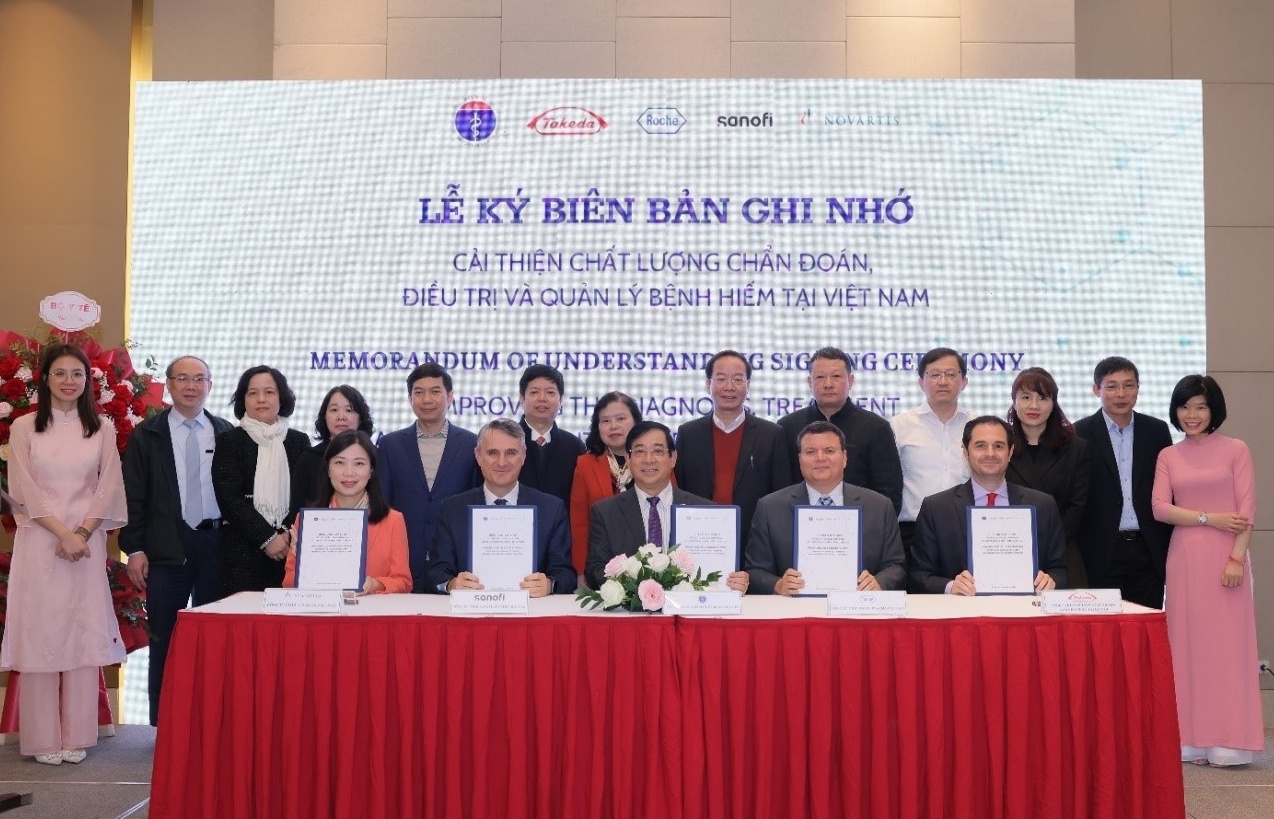Duc Viet Food CEO’s secret to turning VND2 billion into VND700 billion
 |
| Hua Xuan Sinh |
Products at the heart of managers
“Right from the start, we have positioned our products to be of good taste and quality. More importantly, we are determined to make our customers aware that our products are good for them,” Sinh said.
According to him, in the early days after establishment, given its small initial investment of VND2 billion ($88,106) and the operation scale of only seven workers, the competitive advantages of the company lied in the passion the managers put in each product, along with a smart pricing strategy.
With technical support from German partners, Duc Viet has been providing top-of-the-line product quality and manufacturing process, as well as attained the know-how to create a delicious and safe product.
Generally, Duc Viet sausages must contain a minimum of 70-80 per cent meat. The meat must be of good quality and produced in line with the quality assurance process, while best recipes will be adopted to ensure safety and delicious taste.
Given these requirements, the product quality is guaranteed. However, this alone is not sufficient without competitive pricing. Everyone wants to sell high for profit, but the company determined the right factors to achieve sustainable growth.
"Duc Viet calls it a balance of interests between the business and customers that will help to retain customers,” Sinh said.
Building and retaining a brand name
The question is, after being established and put into operation at an already highly competitive market, with a small capital stock and a newly launched system, how can the company develop its brand?
Sinh says each individual business has different circumstances, so the lessons of Duc Viet may not be effective for all.
“We did not have enough money to launch big advertising campaigns, but fortunately, the cost to hire PGs was very cheap. So, we employed a huge number of field marketing staff and sent them all over the place. Thanks to this, Duc Viet sausages quickly garnered popularity, and the company’s products came to dominate the market. However, this strategy might be difficult to apply in recent times,” Sinh shared.
Building a brand is hard, and according to Sinh, it is much harder to keep a brand alive in the food industry.
“For the food industry, the biggest risk is posed by branding crises, such as food spoilage or customer incidents. It is not always the fault of the business though. Sometimes, unexpected events in the process of delivery to customers or preservation of agents damage the products, causing undesirable consequences for all parties. Yet, the responsibility of a company in the face of trouble is not to look for a scape goat, but to communicate with customers. At those times, the passion of the leaders is a key element to help the business quickly overcome its crisis,” Sinh said.
Sinh did not comment much on handling crises because he thinks the lessons from Tan Hiep Phat’s fly incident are too valuable, making all other lessons trivial.
“As I said, if the product is the passion of the company’s leaders, we can confidently invite customers to visit our workplace and learn about how we make this product at any time. If they can come and see a well-established manufacturing process operated by dedicated staff, their negative prejudice might just change. Furthermore, they themselves will later be our spokesmen in the market. We recognise our mistakes, and I believe listening, sincerity, transparency, and sharing can solve all issues,” he said.
Mastering technology is a must
“I find it very strange that many businesses keep jumping to different industries. After pouring investment in a particular area for a few years, they quickly move to others. Clearly, they do not spend long enough to understand the characteristics of the business to further develop it,” Sinh said. He also states that, in case of production, mastering technology is a significant factor.
“We received technological support from a German partner and we were more than willing to spend on hiring experts. However, it took nearly two years to master the technology,” Sinh said. “Right from the beginning, I had to choose the right technology and a strategic vision to follow.”
Sinh graduated from Hanoi University of Science and Technology, majoring in machine-building, and has more than 20 years of experience in manufacturing. He suggests that, in order to achieve successes in this field, it is crucial to adopt appropriate technology and a standard manufacturing process, spend enough time sticking with the business, and always maintain professional dedication.
Regrets after a successful deal
As CEO of Duc Viet Food JSC, he has made a significant contribution to the company’s 16 years of development, promoting the Duc Viet Sausage brand name step by step to become a familiar name to most customers.
Starting from the small chartered capital of only VND2 billion ($88,106), by 2016, the company has raised VND600 billion ($26.43 million) in sales. The ratio of net profit to turnover is approximately 8 per cent, while the return on equity ratio, which measures the profitability of the business, is over 30 per cent.
At the end of 2016, Duc Viet Food JSC was acquired by Daesang Group of South Korea for a total purchase price of VND700 billion ($30.84 million).
Answering reporters’ questions about his feelings when Duc Viet Food JSC, from just an initial investment of VND2 billion ($88,106) in July 2000, was sold at VND700 billion ($30.84 million), Sinh silently stated that the four initial shareholders who contributed capital to the company made their own choices depending on their ages and interests.
“In terms of investment efficiency, this is a very good number. But can you just spend VND700 billion ($30.84 million) developing a company like Duc Viet Food JSC? Even if you can, it will be through blood, sweat, and tears,” he said.
When asked what he will do now, he laughed and said that he was unemployed. Yet, he is still full of enthusiasm, passion, and dedication to pursue further goals. He said that production and manufacturing is a long-term career path and he is going on a quest to find new horizons where he can expend his unending passion and aspirations after the great success of Duc Viet Foods JSC.
| Daesang completes buy-out of Duc Viet Food
South Korean food-producing conglomerate Daesang Corp. Has completed the acquisition of a 99.99 per cent stake in Vietnamese meat processor and distributor Duc Viet Food Joint Stock Company for $32 million in September, fetching the Korean company a bridgehead in the Southeast Asian meat processing market. |
| Daesang Corporation to buy off Duc Viet Food Company
South Korean food-producing conglomerate Daesang Corp. has decided to buy a 99.99 per cent stake in Vietnamese meat processor and distributor Duc Viet Food Joint Stock Company for $32 million, according to newswire Pulsenews.com. |
What the stars mean:
★ Poor ★ ★ Promising ★★★ Good ★★★★ Very good ★★★★★ Exceptional
Latest News
More News
- AEO certification a testament to Piaggio's success (March 12, 2024 | 19:06)
- AkzoNobel sets standard in consumer electronics with sustainable and innovative coating solutions (March 12, 2024 | 10:08)
- Saint-Gobain promotes sustainable construction in Vietnam (February 29, 2024 | 09:00)
- Increasing private investment in healthcare – A long journey ahead (February 27, 2024 | 16:43)
- Get ready for a massive AI shift (February 15, 2024 | 10:04)
- Well-positioned to capture growth opportunities in Vietnam (February 05, 2024 | 13:22)
- Japan-Vietnam economic ties on long-term trajectory (December 14, 2023 | 11:56)
- DHL Express opens new gateway in Hanoi (December 13, 2023 | 08:00)
- AEON committed to more sustainable consumption (November 23, 2023 | 14:42)
- Shared solutions can bring out best in green ambition (November 20, 2023 | 11:05)




















 Mobile Version
Mobile Version